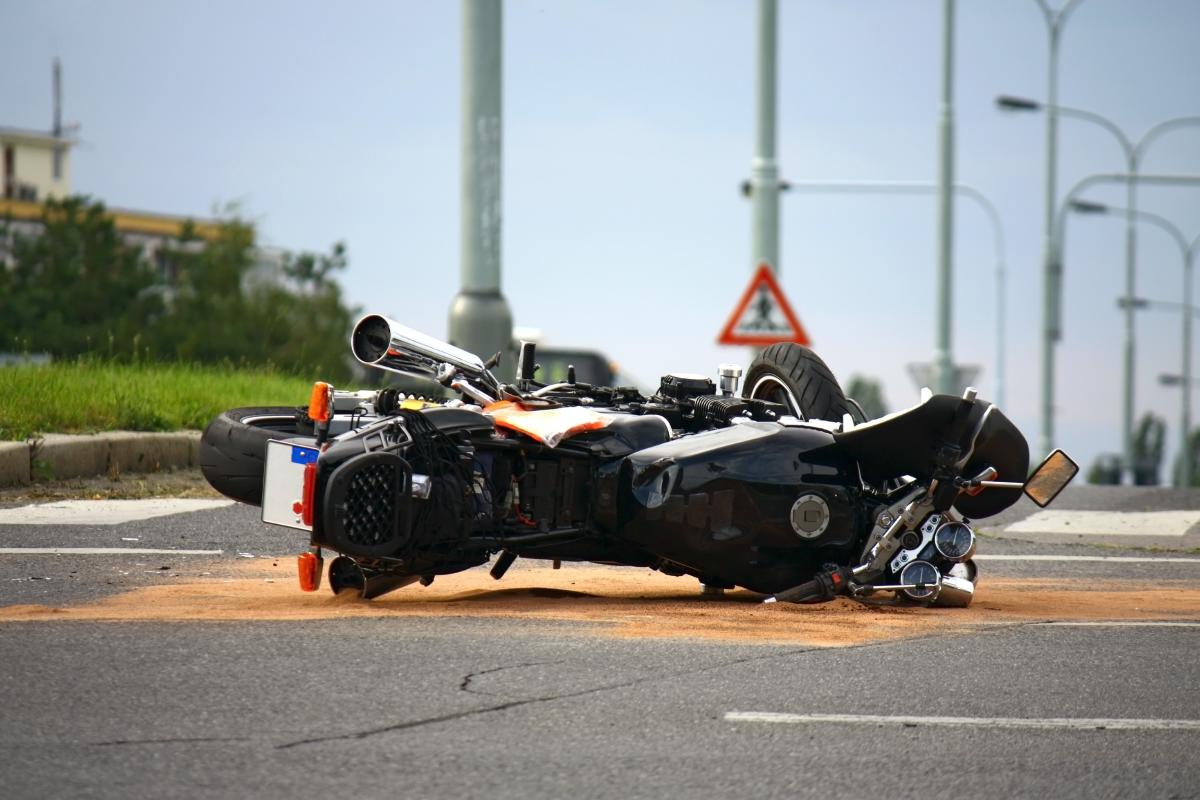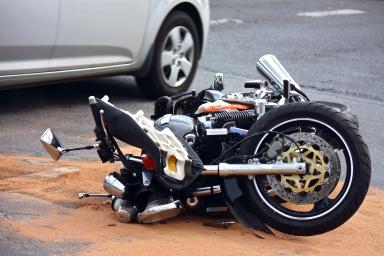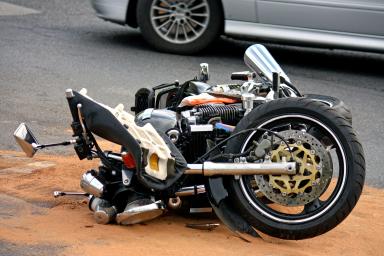How to Handle a Hit & Run Motorcycle Accident

Motorcycle accidents, specifically hit-and-run motorcycle accidents, happen all too often in the United States. In 2019, motorcyclists represented 14% of all traffic-related deaths, and about 75% of motorcycle accidents involved another vehicle. About 80% of motorcycle accidents result in fatalities, and almost 5,000 motorcyclists were killed in 2018. For those who survive motorcycle accidents and hit-and-run motorcycle accidents, knowing what to do after the accident can be difficult if you don’t know the proper paths to take.
In this article, you will find step-by-step instructions on what to do immediately after you’ve been involved in a hit-and-run motorcycle accident, what to do when the accident is over, and how to build a lawsuit for your accident. We’ve also included legal resources to help you or another victim of a hit-and-run motorcycle accident.
What to do at the Scene of an Accident
In this section, we’ll cover the basic steps of what to do if you’ve been involved in a hit & run motorcycle accident and you’re the party that was the victim of the incident.
Step 1 - Find a Safe Area
After an accident, you want to make sure that you avoid any further damage or injuries by moving yourself out of the way of traffic so that no one else gets hurt. If you’re on a residential street or a street with a sidewalk, find safety near the curb and make sure you are not seriously injured. Your safety is the priority.
Step 2 - Seek Medical Attention
After an injury, you may have serious injuries that must be attended to. Once you get to safety, call 911 or ask a bystander to call for medical assistance. Make sure to give a single person specific instructions on how they can help you. The sooner you receive medical attention and start a police report, the better.
Step 3 - Describe All Symptoms and Injuries
Once 911 arrives, and you receive medical attention, describe your symptoms and any injuries you may have suffered as thoroughly as possible. Traumatic head injuries can often take place in motorcycle accidents, so report any signs of concussions or other head injuries.
Step 4 - Give a Detailed Report to Police
After you’ve gotten medical attention:
Talk to the police and give them a detailed report of the incident.
Be thorough with your report.
Note traveling speed, the vehicle's make/model/color, what the driver looked like (if you saw), and their approximate age, as well as the direction they came from and where they headed, if applicable.
Some states have laws that allow motorcyclists to wear recording devices while driving, so if you are wearing one, state that to the authorities.
What to Do After Leaving the Scene of an Accident
Step 1 - Gather Evidence
Gather as much evidence as you can for your claim. This includes pictures of the accident scene, photo evidence of any injuries, photo evidence of damage to your vehicle, video evidence (if allowed by state law), CCTV footage, hospital bills, and vehicle repair costs. Also, keep track of lost wages if your injuries keep you out of work.
Step 2 - Contact Your Insurance Company
After your accident, contact your insurance company about the accident and file an insurance claim as soon as possible. This will help ease some of the worries after an accident and quickly get the ball rolling on your claim. The sooner you contact your insurance after a hit & run motorcycle incident, the better.
Step 3 - Contact a Lawyer
Once you’ve gathered your evidence after the accident, call an experienced motorcycle accident attorney to see if you may have a case. Despite it being a hit & run accident, sometimes things like potholes, missing traffic signs, or debris can lead to the incident occurring. This would give the victim of the accident a case against the government agency responsible for those things and make them liable for the accident.
Can I Still Recover Compensation if the Other Driver Isn’t Identified?
The answer to this question depends on some factors. Sometimes, you can still recover compensation if the other driver of your hit & run motorcycle accident is not identified or found. You can try to file a claim through your insurance under the uninsured or underinsured motorist coverage, but it must be included in your own insurance policy.
What Happens if the Police Find the Other Driver and They Don’t Have Insurance?
If the driver who hit you is found after your accident and it is discovered that they do not have insurance or is underinsured, you can still attempt to get compensation from your own insurance policy if you have the uninsured motorist coverage on your policy. If the driver is underinsured, your policy will cover the difference in the cost of the claim.
How to Start a Motorcycle Accident Lawsuit
If you have recently been the victim of a motorcycle accident or a hit & run motorcycle accident, this section will provide the necessary steps to build and start your lawsuit. Victims of these accidents deserve proper justice and compensation, so follow these steps to get what you rightly deserve!
Step 1 - Find and Hire an Experienced Motorcycle Accident Attorney
After getting the proper medical attention after your accident, the top priority should be finding and hiring an experienced motorcycle accident attorney to help you recoup compensation. Your attorney will fully understand the extent of your legal rights and help you get the compensation you deserve from this traumatic experience. Hiring an attorney right away while the details of the incident are still fresh in your mind is important.
Step 2 - Gather Evidence
As previously stated, you should gather as much evidence of the accident as possible. An attorney can help you determine what is needed and can utilize their resources to collect things like CCTV footage, which can be challenging. Getting information for witnesses is also extremely important, as your attorney can speak with them and build your case using their testimony.
Step 3 - Determine Negligence
If your motorcycle accident is not a hit & run incident, it is important to establish the negligence of the at-fault party in your lawsuit. In these types of accidents, negligence is determined as the failure to be responsible on the road. It could be that the at-fault party was speeding, merging lanes without signaling, or driving under the influence. These are all examples of negligence that could lead to a motorcycle accident.
Step 4 - Put an Amount on Your Claim
In your motorcycle accident claim, it’s important to put a value on both special damages and general damages. Special damages include hospital bills, treatment costs, lost wages, and repair costs to your motorcycle. General damages are things like emotional damages, pain and suffering, and emotional distress that can occur after an accident. Sometimes a defendant’s behavior is found to be especially harmful, and courts will seek to punish the defendant and deter others from repeating the same kind of harmful behavior in the future. In these cases, and at the discretion of the court, punitive damages may also be awarded to the plaintiff.
Step 5 - Decide if You Want to Settle or Not
Most motorcycle accidents cases end up settling rather than proceeding through a full trial to reach a jury verdict. This happens for several reasons including the length of time it takes to litigate a case to verdict, along with the significant additional expenses incurred in bringing a case to trial. An experienced personal injury attorney can assist you with weighing the costs and benefits of settlement versus proceeding with a lawsuit as it pertains to your specific case.
Legal Resources for Victims of Hit and Run Motorcycle Accidents
Getting in a hit-and-run motorcycle accident can be very traumatic. It’s important to follow the steps that are in this document, especially when it comes to your health. If you or someone you know is the victim of a hit-and-run motorcycle accident, this section will provide several legal resources with links attached to assist you with getting the help you need and deserve as a victim of someone else’s negligence and reckless behavior.
Motorcycle Legal Foundation
The Motorcycle Legal Foundation is an educational resource that is privately owned and operated to provide legal resources to motorcyclists involved in hit-and-run motorcycle accidents. The site includes contact information for nationwide attorneys specializing in motorcycle and hit-and-run motorcycle accidents. The site also provides resources for motorcycle safety, insurance, gear, products, motorcycle reviews, and blogs on several motorcycle topics. To learn more about the Motorcycle Legal Foundation and how they can provide you with support after your accident, visit their website here.
US Claims
US Claims is a website dedicated to helping victims of personal injury accidents, including hit-and-run motorcycle accidents, obtain the funding and financial resources they need to pursue their lawsuits. US Claims can provide you with information on how to find an attorney to help with your case, as well as provide funding for your attorney and corresponding legal costs. To learn more about US Claims and how they can help you after your hit-and-run motorcycle accident, visit their website here.
Expertise.com StaffAuthor
Step into the world of Expertise.com, your go-to hub for credible insights. We don't take accuracy lightly around here. Our squad of expert reviewers, each a maestro in their field, has given the green light to every single article you'll find. From rigorous fact-checking to meticulous evaluations of service providers, we've got it all covered. So feel free to dive in and explore. The information you'll uncover has been stamped with the seal of approval by our top-notch experts.

Amanda HaydenReviewer
Amanda Hayden is a trial attorney with The Hayden Law Firm St. Louis Accident & Injury Lawyers where she specializes in personal injury law, including car accidents, motorcycle accidents, trucking accidents, catastrophic injuries, neck and spinal injuries, and traumatic brain injuries (TBIs). Amanda Hayden is licensed to practice law in both Missouri and Illinois and has office locations in St. Louis, Missouri and Belleville, Illinois.


![¿Cuál es la indemnización promedio de las demandas por accidentes de moto? [2023]](https://images.ctfassets.net/k00sbju4hbzq/590XSDSoqNVs6XSMNY5s3G/a969ee3bedaaf9016cec601fc30f495b/average_motorcycle_accident_settlement.jpg?fit=fill&w=384&q=75)

